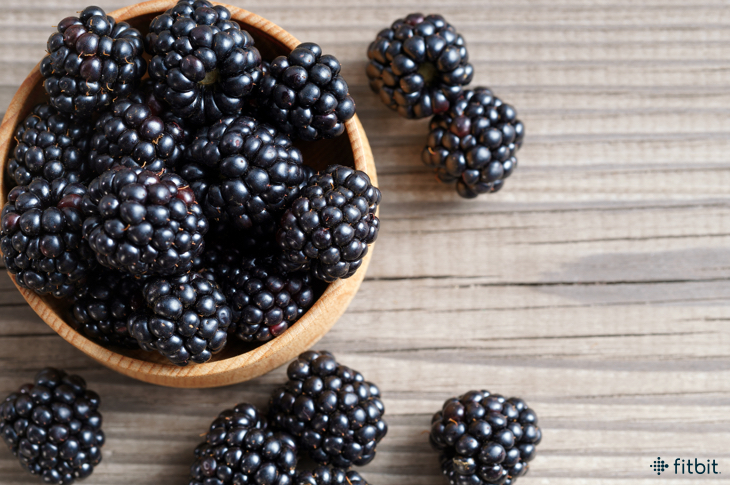
Protein is sexy. Red wine is sexy. Fiber? Not so much. It is, however, one of the most underrated and hardworking nutrients around. Best known for its ability to keep things moving in the digestive department, fiber also helps fend off a surprising number of ills, like heart disease, cancer, and diabetes. Plus, eating more of it can help you stay slim—making it a secret ingredient for weight loss success.
The reason? After you eat fiber, the roughage travels through the gut to your large intestine, where it’s fermented by bacteria. That process produces hunger-taming hormones that send signals to your brain and act as natural appetite suppressants. Even better, fiber also traps small amounts of energy from the food you eat, whisking calories out of your body before they can be absorbed. So when you’re getting enough fiber, you won’t feel quite so hungry, and you won’t digest quite so many calories.
The only trouble is you’re probably not getting nearly enough. Even though women and men are supposed to down a respective 25 and 38 grams of fiber every day, most people only eat about half that amount. But getting your fill isn’t about inhaling a big bowl of bran cereal every morning (or chewing on cardboard). First of all, pump up that fresh, whole produce! If you make a goal to eat the recommended 2½ cups vegetables and 2 cups fruit every day, you’ll be well on your way. Whole grains and legumes also help, and there are lots of delicious options to put on your plate.
To really reap fiber’s benefits, you need to work it in all day long, at every meal and snack. Take a bite out of these seven foods to help you get your fiber fix.
Chia seeds: Less fiber is consumed at breakfast than any other meal. Why does that matter? Fiber expands in your gut like a sponge, filling you up. Without enough, mid-morning hunger pangs can hit hard. Sprinkle some chia seeds on your cereal or yogurt for instant appetite control. Or try this Chia Seed Pudding with Mango & Coconut.
You’ll get: 5 g fiber per 1 tablespoon chia seeds.
Popcorn: A fiber-packed snack is one of the smartest strategies for staying full between meals. What’s tempting and tasty to nibble on? Enter popcorn. It’s not just crunchy and delicious. It’s also a guilt-free whole grain.
You’ll get: 3½ g fiber per 3 cups (1 oz/30 g) plain popcorn.
Lentils: Fiber is so effective in protecting against diabetes that one study finds women who ate 26 grams a day were 22 percent less likely to develop diabetes than those who consumed only 13 grams. Why not get yours from lentils? These tender little legumes are a cinch to toss into salads or quinoa. Plus, they take a fraction of the time it takes to boil dried beans.
You’ll get: 16 g fiber per 1 cup (7 oz/220 g) cooked lentils.
Barley: This grain boasts beta-glucan, a special kind of fiber that helps lower dangerous LDL cholesterol without reducing beneficial HDL cholesterol. Big on chewy texture and nutty flavor, try barley instead of rice in a savory mushroom risotto.
You’ll get: 6 g fiber per cooked 1 cup (5 oz/155 g) cooked barley.
Blackberries: 1 cup of these juicy berries delivers more fiber than you’d score from 2 slices of whole-wheat bread. Munch them straight out of hand for a sweet, satisfying snack. Or pop them in the microwave for 30 seconds for a warm, gooey sauce to drizzle over plain, low-fat Greek yogurt.
You’ll get: 8 g fiber per 1 cup (4 oz/125 g) blackberries.
Bulgur: Eating three servings a day of whole grains is linked to lower body weight. But most people don’t even net one. Make it easy by simmering a big pot of whole grains, like bulgur. Divide it into containers to store in the fridge or freezer, perfect to defrost on busy weeknights, and serve alongside seared salmon or spin into delicious grain bowls.
You’ll get: 8 g fiber per 1 cup (6 oz/185 g) cooked bulgur.
Baked potatoes: If you’re going gluten free or simply trying to eat less wheat, you could be slashing roughage from your diet without even realizing it. Old-fashioned spuds can help fill the void. Just don’t forget to eat the skin. That’s where most of their fiber lives.
You’ll get: 4 g fiber per 1 medium baked potato.
This information is for educational purposes only and is not intended as a substitute for medical diagnosis or treatment. You should not use this information to diagnose or treat a health problem or condition. Always check with your doctor before changing your diet, altering your sleep habits, taking supplements, or starting a new fitness routine.

Am I missing something, or does the Fitbit app not track the amount of fiber you’re eating? That would be so helpful if you include that in the next upgrade.
I find it fascinating that fiber can lets small amounts of calories go before being absorbed. I’ve been eating a lot of protein which has been helping, but maybe I need to get some chia seeds to balance out my diet. I’ll have to focus more on getting around 30 grams of fiber a day.
Okay…LUV my Fitbit!